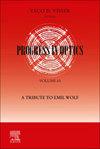Posterior Chamber Phakic Intraocular Lenses for the Correction of Myopia: Factors Influencing the Postoperative Refraction
3区 物理与天体物理
Q1 Materials Science
引用次数: 1
Abstract
Posterior chamber phakic intraocular lens implantation is a refractive technique for the correction of myopia. This study aimed to identify those factors contributing to variability in postoperative refraction. Methods: This retrospective study evaluated 73 eyes (one eye per patient) implanted with myopic implantable collamer lenses (ICL). Eyes were divided into two groups, the low myopic group (LMG) (ICL > −9.5 DS) and the high myopic group (HMG) (ICL ≤ −9.5 DS), to compare the predictability, efficacy index, and postoperative refraction between groups. The association of postoperative refraction with anatomical, demographic, and optical features was assessed through correlation analysis and investigated using ray-tracing. Results: Postoperative refraction at 3 months for the whole group was close to emmetropia at −0.02 ± 0.37 DS, the LMG tended toward myopia and the HMG, toward hyperopia. The results showed that 65% and 54% of the eyes had postoperative refraction of within ±0.25 DS, respectively, in the LMG and HMG, and in both groups, 100% were within ±1.00 DS. ICL implantation had a higher efficacy index in the HMG (1.13 ± 0.15) than in the LMG (1.04 ± 0.15). Postoperative refraction was positively associated with the vault (R = 0.408) and negatively correlated with ICL power (R = −0.382). Conclusion: The predictability and effectiveness of ICL implantation is high in a wide range of myopias. Considering the expected vault and including accurate vertex measurements would contribute to improving the predictability of the results.后房型人工晶状体矫正近视:影响术后屈光的因素
后房型人工晶状体植入术是一种矫正近视的屈光技术。本研究旨在确定导致术后屈光变化的因素。方法:回顾性研究73只眼(每例1眼)植入性近视晶体(ICL)。将眼睛分为低近视眼组(LMG) (ICL > - 9.5 DS)和高度近视眼组(HMG) (ICL≤- 9.5 DS)两组,比较两组的可预见性、疗效指标和术后屈光度。术后屈光与解剖学、人口学和光学特征的关系通过相关性分析和射线追踪进行评估。结果:术后3个月全组屈光接近于斜视(- 0.02±0.37 DS), LMG倾向于近视眼,HMG倾向于远视。结果显示,LMG组术后屈光度在±0.25 DS以内的占65%,HMG组术后屈光度在±1.00 DS以内的占54%,两组术后屈光度在±1.00 DS以内的占100%。高剂量组ICL植入术疗效指数(1.13±0.15)高于低剂量组(1.04±0.15)。术后屈光与拱顶呈正相关(R = 0.408),与ICL度数负相关(R =−0.382)。结论:ICL植入术在大范围近视中具有较高的预见性和有效性。考虑预期的跳高和包括准确的顶点测量将有助于提高结果的可预测性。
本文章由计算机程序翻译,如有差异,请以英文原文为准。
求助全文
约1分钟内获得全文
求助全文

 求助内容:
求助内容: 应助结果提醒方式:
应助结果提醒方式:


